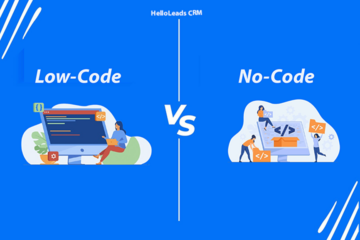
During these turbulent times where the company’s top line (revenue) is affected, the only way to boost the bottom line (profit) is by focusing on cutting expenses. This will strengthen the cashflow which results in a sustainable business. Before we start, let’s understand few things about expenses!
- According to the IRS, to be tax deductible, a business expense “must be both ordinary and necessary.” Ordinary means common and accepted practices and necessarily means the practices needed for the business.
- Transactions take place in the form of cash and credit. Under cash transactions the payment is settled immediately and under credit the payment is settled at a later date.
- Expenses generally fall into the categories of operating (e.g., administrative expense, trading expenses etc.,) and non-operating expenditures (e.g., Bank charges, Interest on business loan for equipment etc.,)
Having understood what an expense is, let’s explore the ways in which we can cut them:
(1) Using Mobile apps as scanner

With the advent of smart phones with high end cameras, you can digitize documents quickly with a mobile scanning app. Using optical character recognition (OCR), you can convert any physical documents into digitized form. Whether you need to upload images of receipts for an expense report or turn a few pages of a book into text that you can edit, a mobile scanning and OCR app is what you need. Certainly, you reduce a lot on CAPEX (Capital Expenditure) by eliminating a scanner.
(2) Avail incentives for early supplier payments
An early payment discount is one form of trade finance and a way for companies to obtain a discount on a supplier’s invoice in exchange for paying the supplier early. In other words, a company pays less than the full amount due while the supplier receives payment earlier than they would under standard payment terms.
(3) Revenue and Inventory Analysis
When it comes to stock or inventory management, ABC analysis (classify the goods like A Class, B Class & C Class) typically segregates inventory into three categories based on its revenue and control measures required to drop loss making businesses/clients:
| Class | Items | Revenue | Control Measures |
| A | 20% | 80% | Tight |
| B | 30% | 15% | Neutral |
| C | 50% | 5% | Liberal |
(4) Digital Advertising
With the proliferation of internet across the world, advertising through online platforms like Facebook, Instagram, YouTube etc is cost effective as well we can target right audiences. Big tech companies have built tools like Ad manager, Power Editor etc, to run ad campaigns and track the effectiveness in real time. With increased mobile screen time, these platforms are effectively replacing traditional ad platforms.
(5) Adopting Open source
With open-source revolution gaining stream, many common problems/use cases already have a free to use solution. In fact, most of these are inter operable with paid COTS products. Adopting those can drastically reduce license cost as well and help us to focus on the core business. For example, License fees payable to Microsoft windows/word can be cut, by using Open-source software’s like Ubuntu/ Open-source office suites.
(6)Rationing Telephone Connection
Wherever possible Landline can be replaced with VOIP (Voice over Internet Protocol) thereby increasing quality and reducing cost.
(7) Initiate rewards basis productivity

If technology reduces human efforts, it also comes with a menace called Distraction in workplace which cannot be avoided. This can be addressed by initiating fun events once a week, giving small rewards to boost their productivity and also use smart time management tools that aid the process.
(8) Promoting Hybrid Work environment
WFH / remote working is a game changer & here to stay. The pandemic has accelerated the adoption. A hybrid work environment, where employees balance between working remotely and travelling to office, helps with cost reduction through limited work place usage, but at the same time gives them a team environment.
(9) Encourage digital transactions

The Digital India programme is the flagship campaign of the Indian government. One of the key objectives of this campaign is to make India cashless or less-cash economy. This helps to eliminate middle man costs, enables faster settlements and improves the cash flow.
(10) Adopting zero based budgeting
Zero-based budgeting (ZBB) is a method of budgeting in which all expenses must be justified for each new period. In this method budget needs to be prepared from the scratch and reduced spending and cutting costs in the maximum possible way. This will save a lot of money and understanding as to where the money is going.
(11) Lean meetings
Lean meeting is a meeting style that uses a collaborative method of generating the topics and structure in order to facilitate more engaged and directed conversation.
The process is simple:
- Gather meeting topics from all participants.
- Begin with quickly collecting meeting topics from participants through the brainstorm activity, and then create a ranking poll to collectively prioritize most essential topics.
- As the meeting goes on, create an agenda item for the main points of each topic being discussed so that participants are reminded to avoid tangents (curves).
(12) Channelizing utility and consumption costs
- In today’s time power consumption and maintenance costs are inevitable.
- Maximum consumption is mainly due to Air Conditioners and systems present.
- In that case, a constant monitoring of consumption units and maintenance is necessary.
- To try and understand your costs, you can start with your AC unit’s power rating (check the label on the condensing unit), which will tell you how much power it uses under perfect conditions.
(13) Automate the operations
Business Automation means replacing manual efforts with technologies and tools. You can start with automating the production process and customer service. This will help in addressing the lag that occurs in the manual process and will strengthen the relationship with the clients.
(14) Maximize employee skill sets
One very important aspect of employee productivity is the leadership, effective communication and work delegation. The leader has to ensure that right fit for the job is hired and a proper responsibility is assigned to the new joiner by the immediate superior. Focus on training and development will help in developing the employee skills and also keep them motivated to work for the company.
(15) Reduce Printing Costs

Even though we are advancing as far as technology is concerned but still a lot of companies print copies of the documents and manuals which is a sheer wastage of resources, as hardly anyone uses or it ends up in trash. The storage spaces to store all these papers into racks will also cost you money. The whole process is just expensive, time-consuming and doesn’t serve the right purpose. We live in a digital era, avail the use of Cloud Storage for keeping your data and whenever you need, you can retrieve.
(16) Outsource Core and Non-core functions
In small businesses, transactions are not big enough to hire a CFO. In that case, they can outsource it to CPA’s and Accountants who can write their books of accounts and work out taxes. By doing this, they can improve in their cutting costs, core competency, optimum resource utilization and quality customer service. Before outsourcing the company must define its core functions and based on that they need to decide which functions can be outsourced.
(17) Avail any govt subsidies or schemes
For small business firms you can opt for government aid by enrolling in Interest subsidy eligibility certificate (for further info click here https://msme.gov.in ) to apply for collateral free loans from PSU’s, PSB’s, etc. can help getting better financial assistance. Besides that, there are a lot of welfare schemes for the small businesses when utilized properly can help in the financial growth and excess capital can be used in developing new ideas, enhance production capacity, etc.
(18) Hire interns
Interns are an inexpensive resource as every potential candidate waits for the opportunity to gain experience and develop the skill set. Internship is the best opportunity to utilize that. In order to find your on-going pipe line for future employees you need an Internship Program. For this companies approach the educational institutions, independent portals like Internshala, employee referral, etc. Hiring is done through walk-ins, mass hiring, telephonic interview as well as virtual interviews. Hiring an intern for the limited or no stipend can also work depending on your requirements.
These are the few simple methods, which can be implemented effectively to reduce the cost, especially during this pandemic time, to come out with flying colors, without much impact on the bottom line.
Share this blog :











Hi Gopal,
Good Morning,
Very useful & informative blog.
keep it up.
with regards,
Sachin Manjrekar
Nice write up.
Gopal it is really wonderful. You have done a yeomen service to all small scale business operations, whose perennial problem is cutting costs. This would, I am sure, certainly help them a lot. Congratulations on your endeavour.